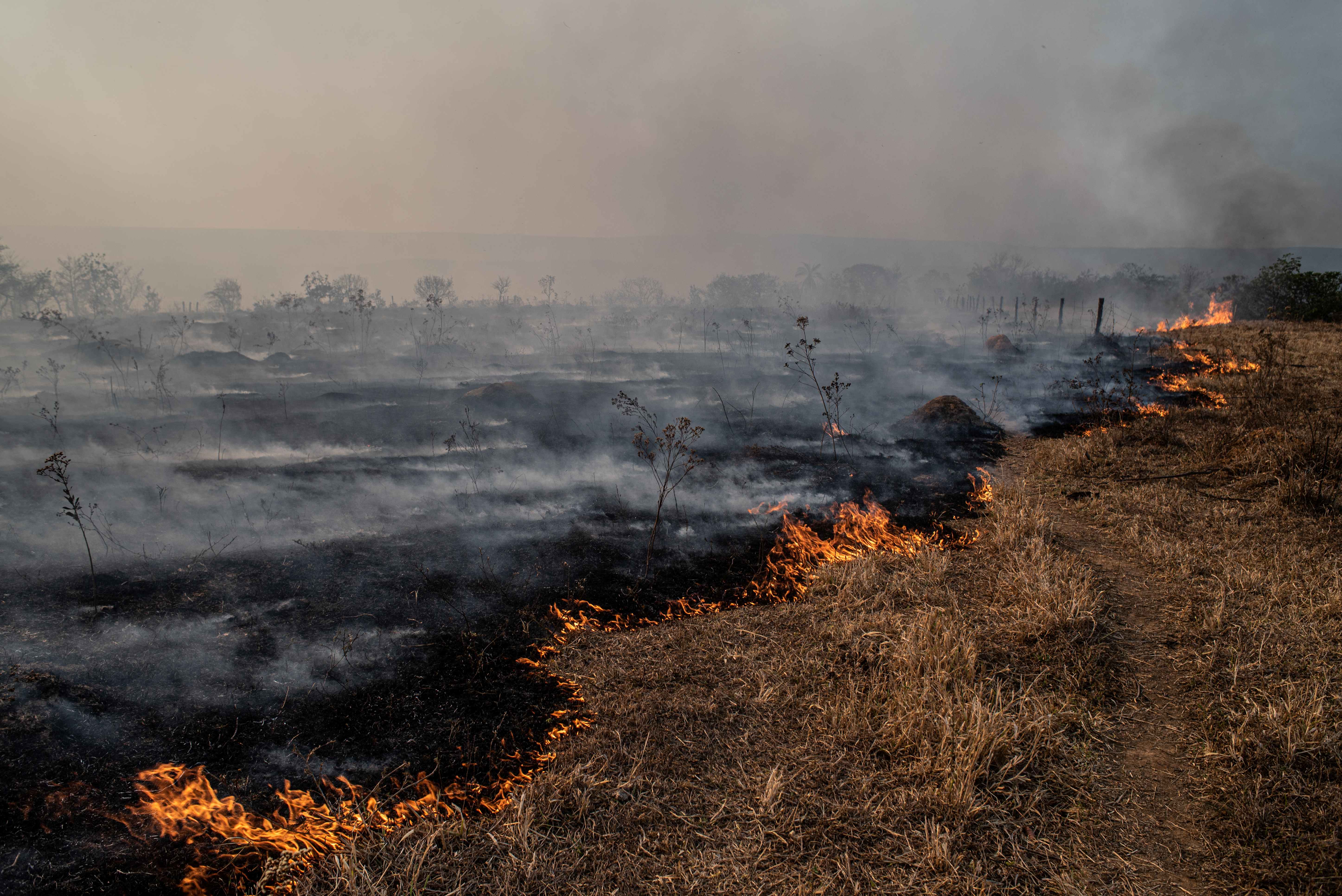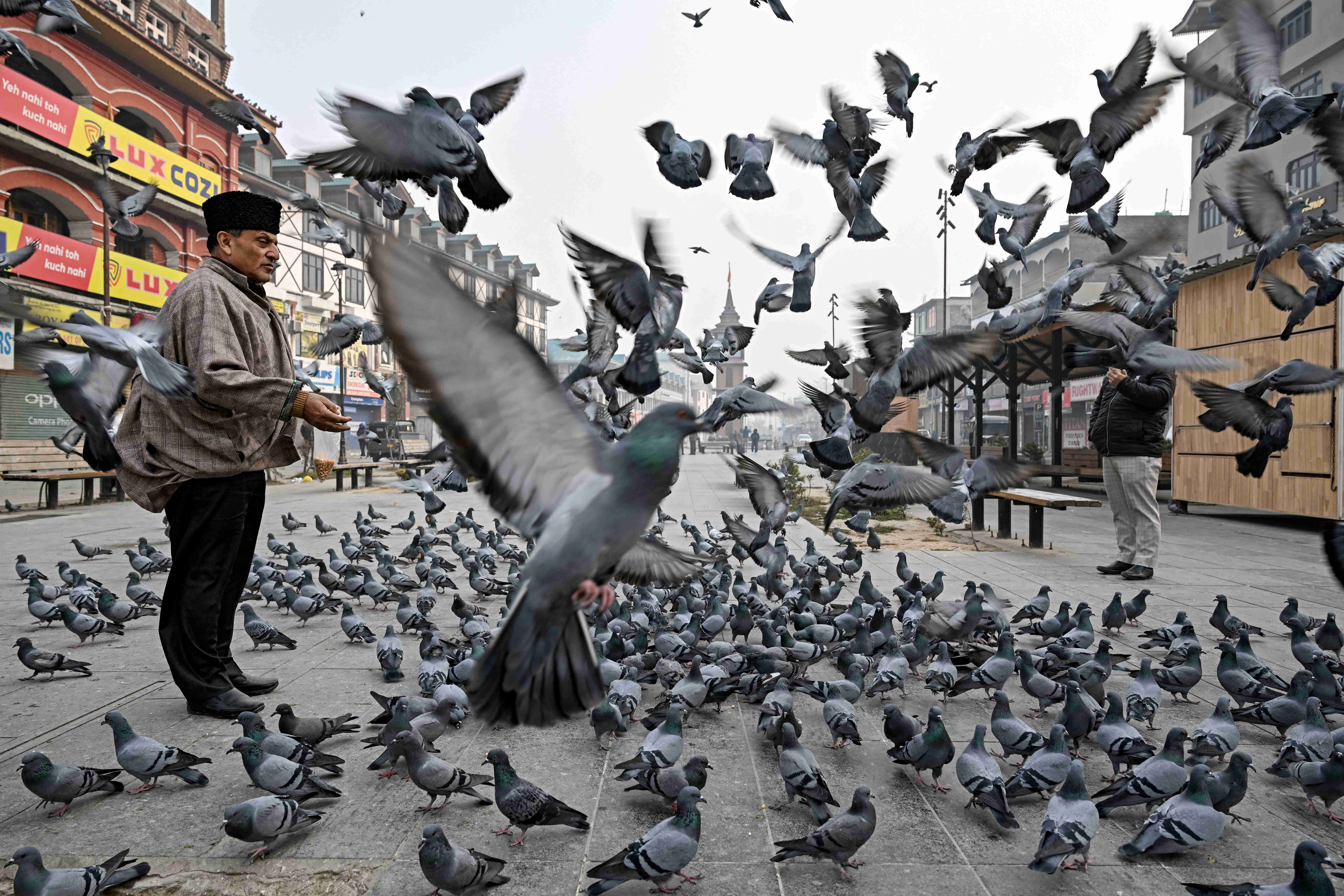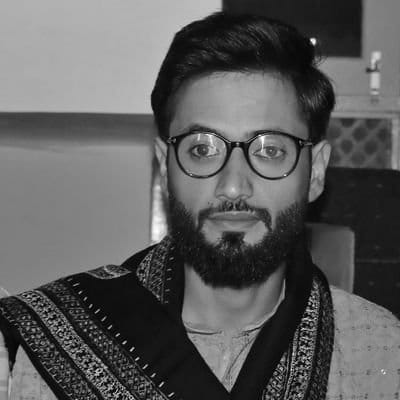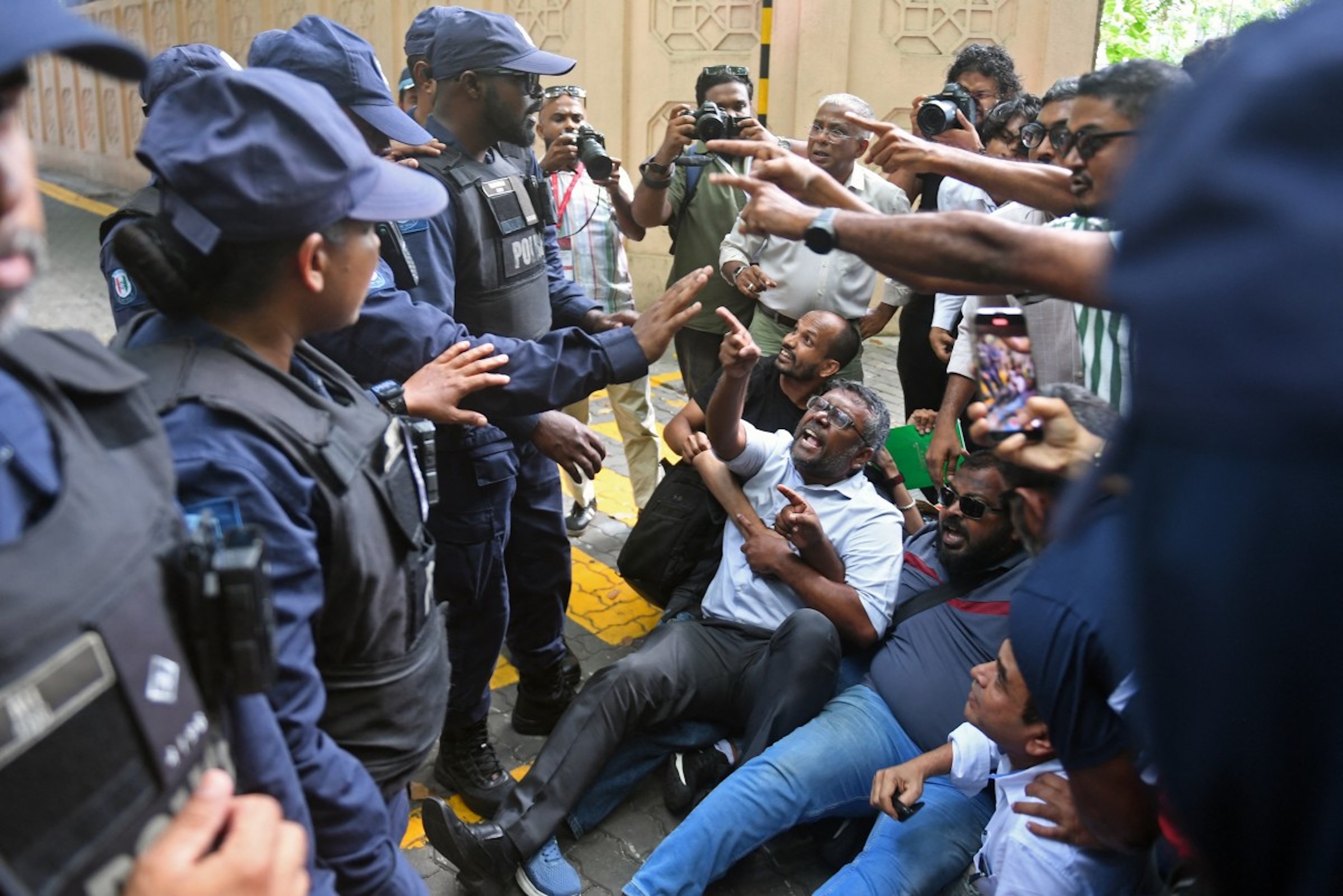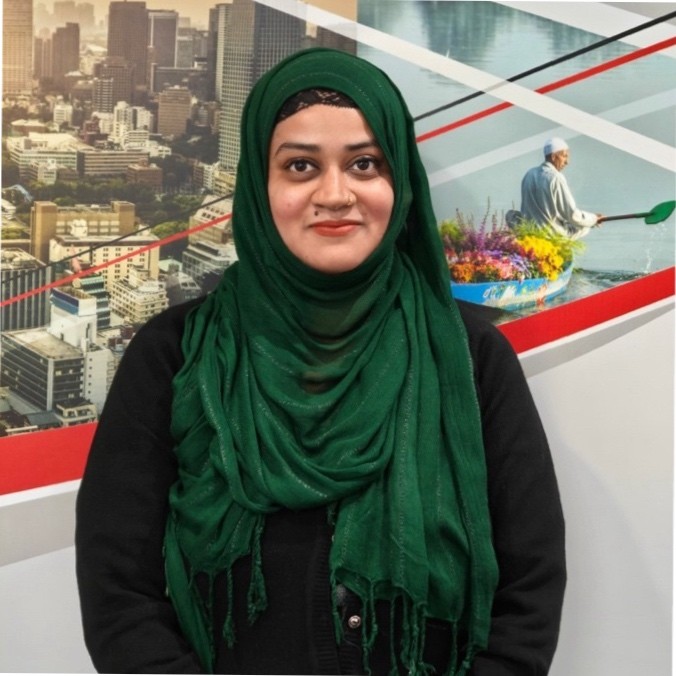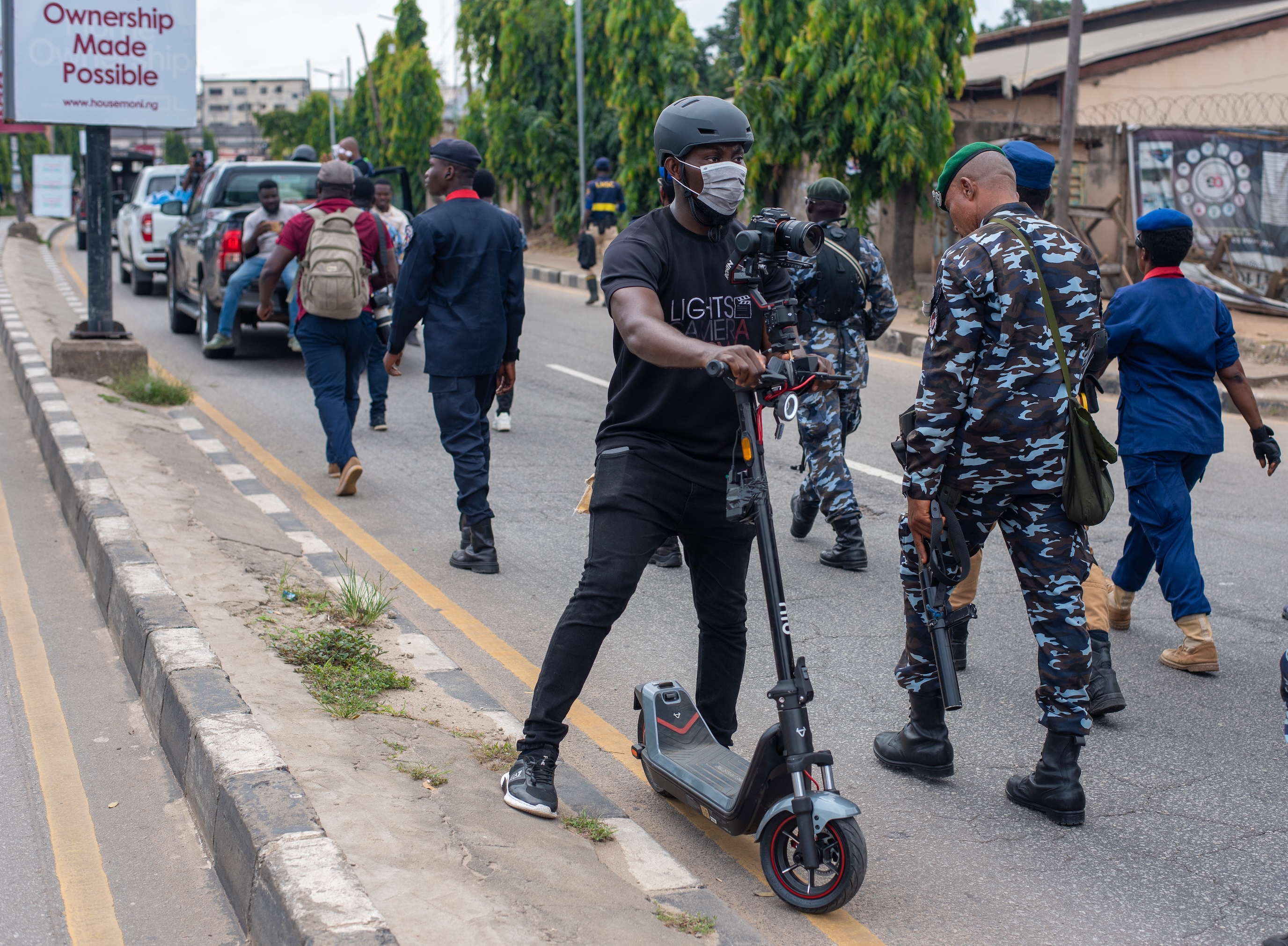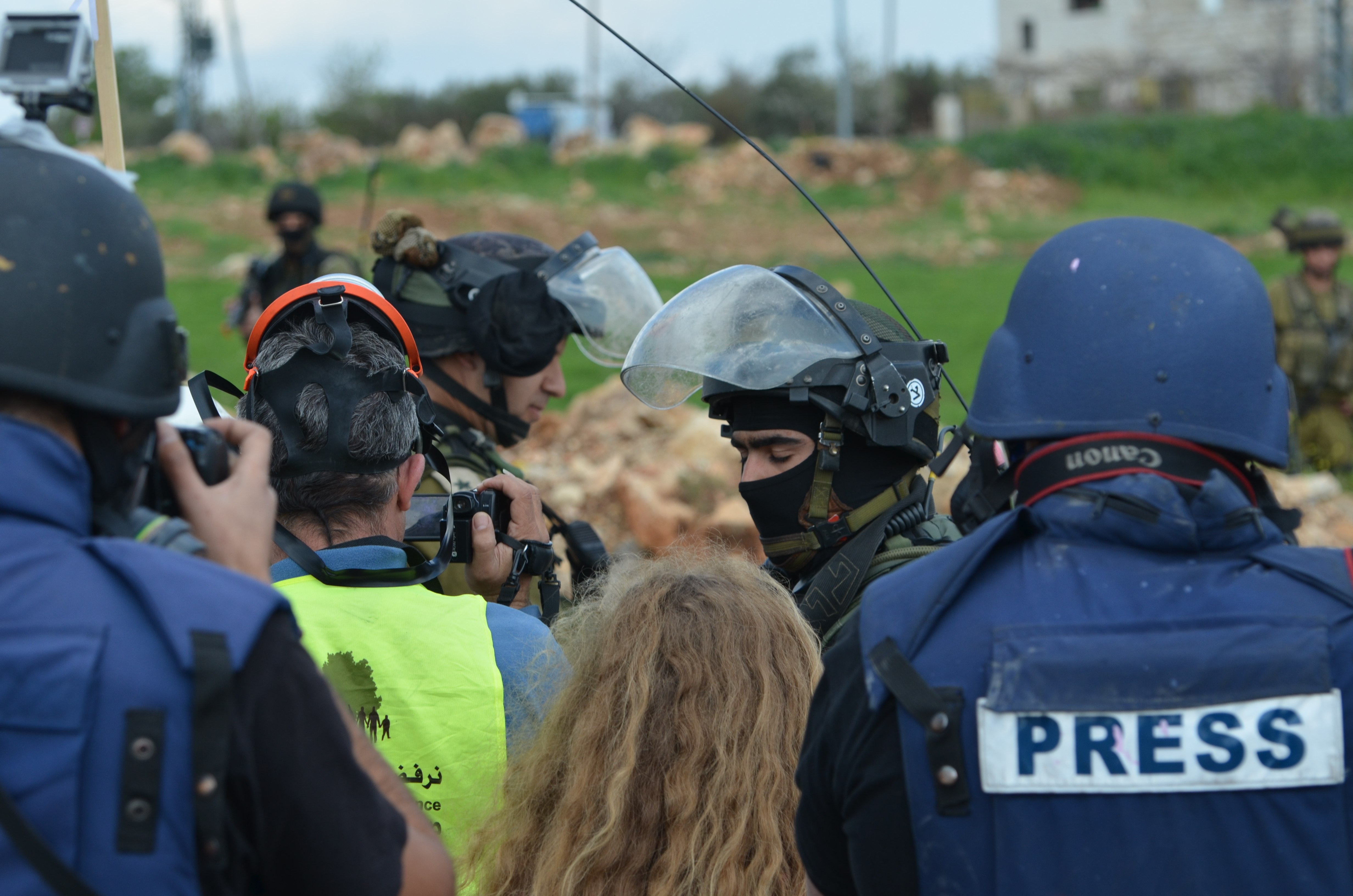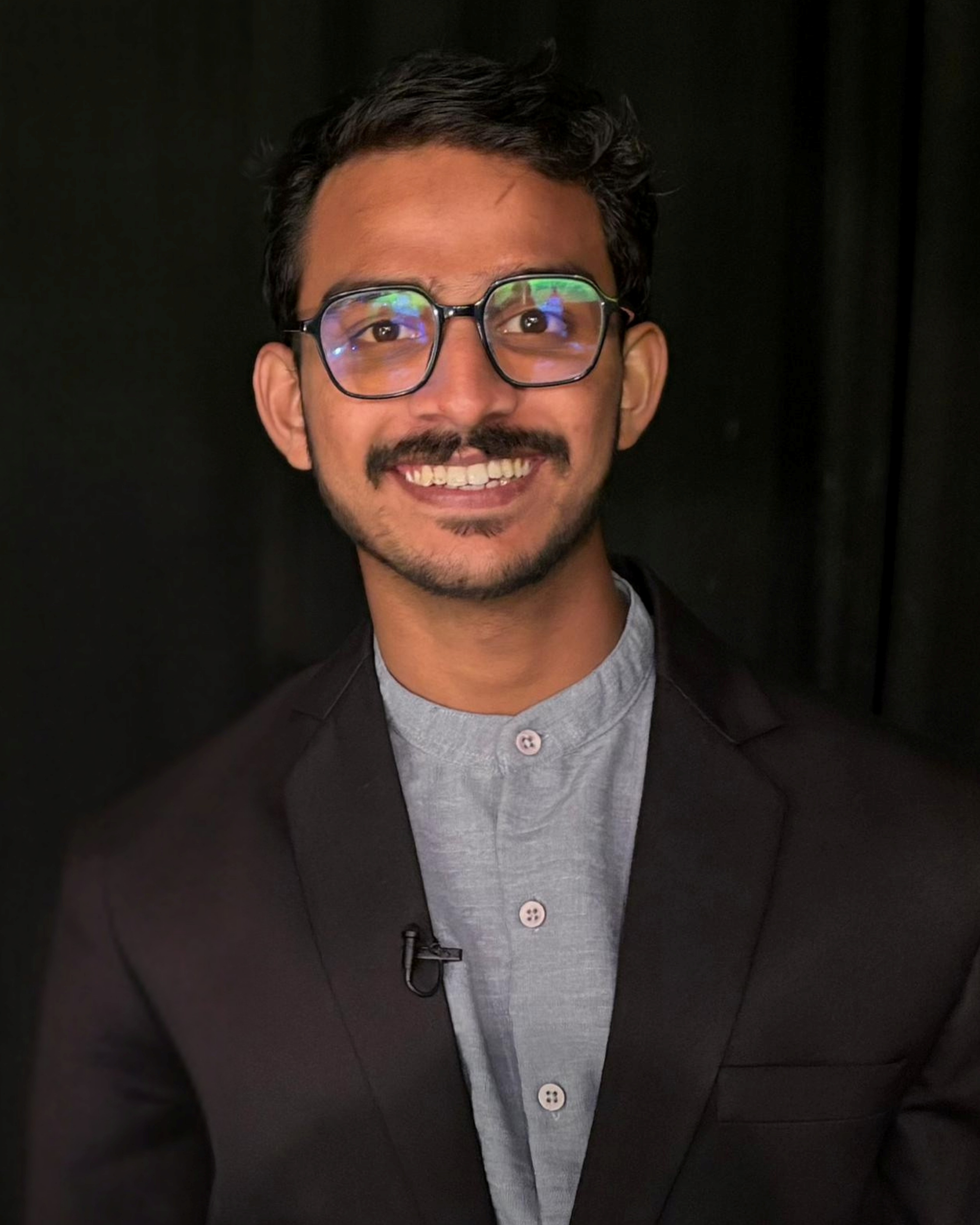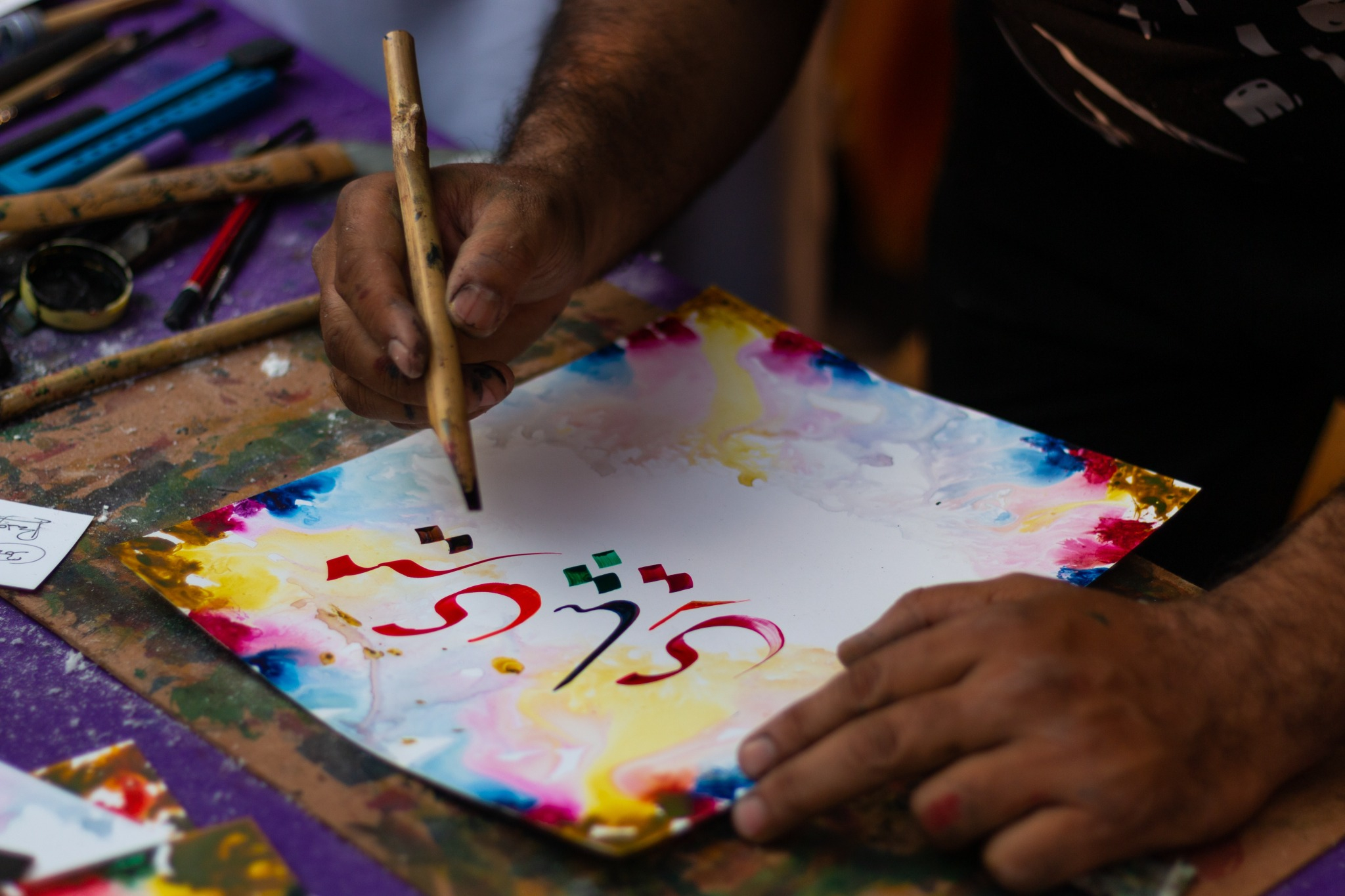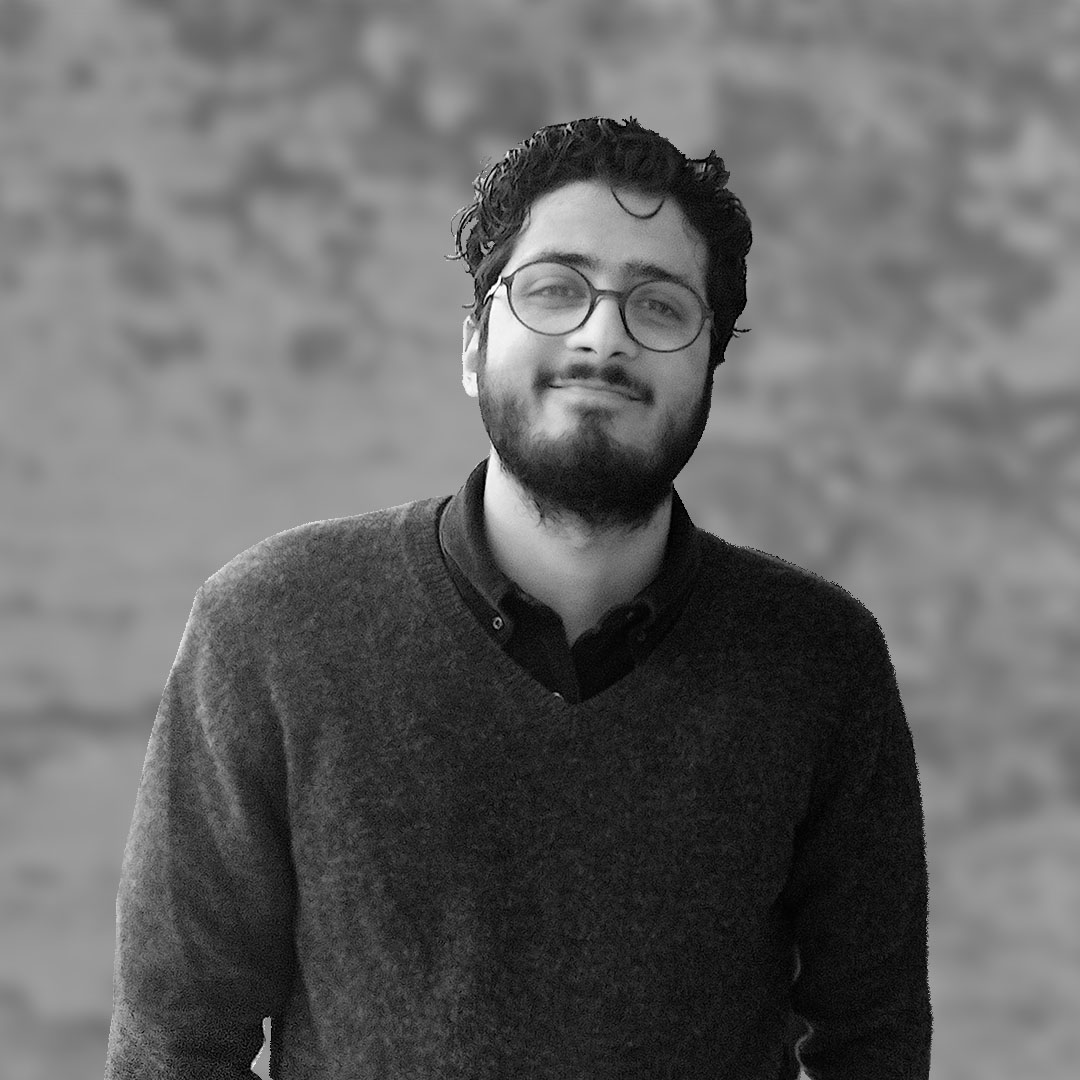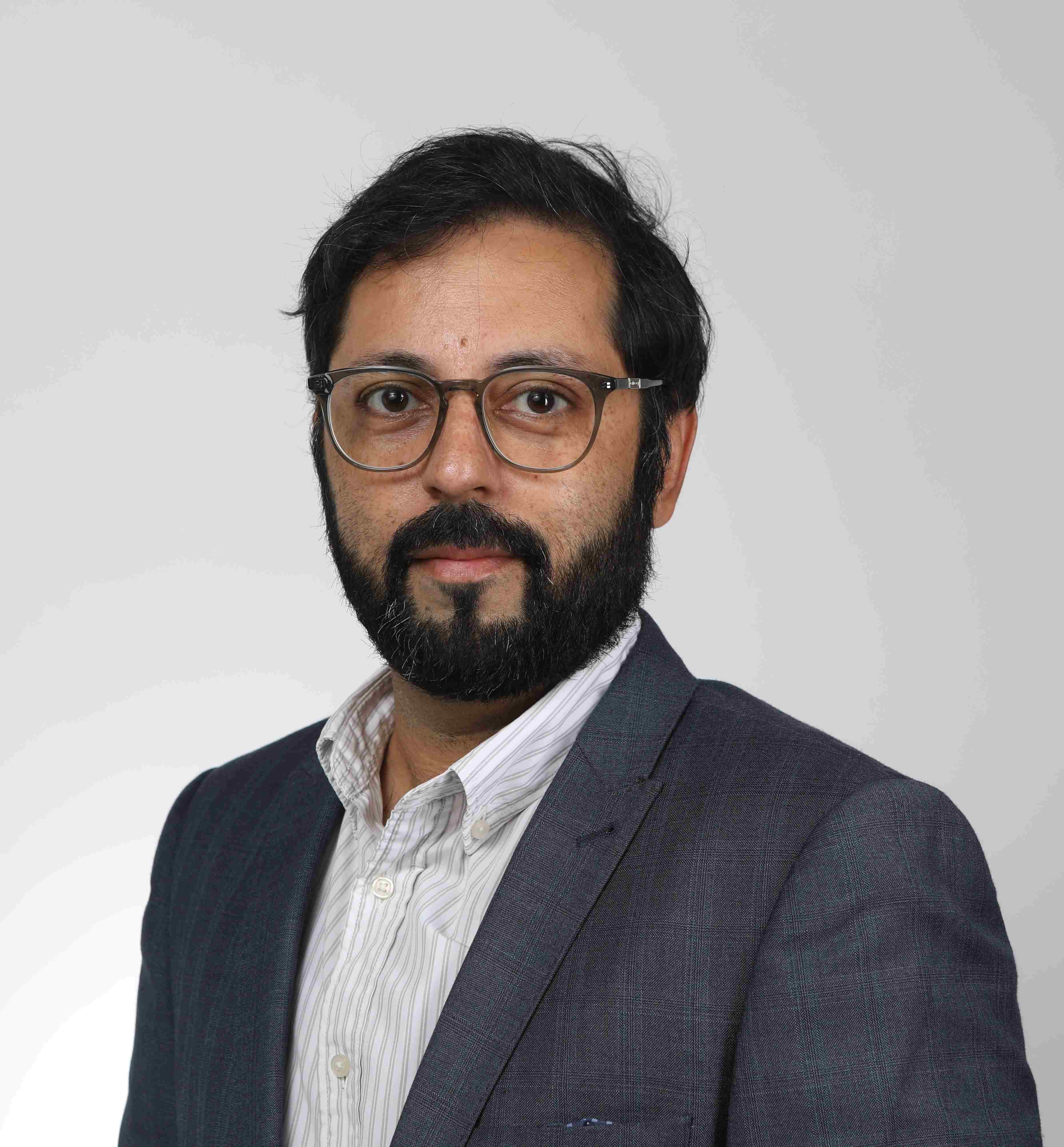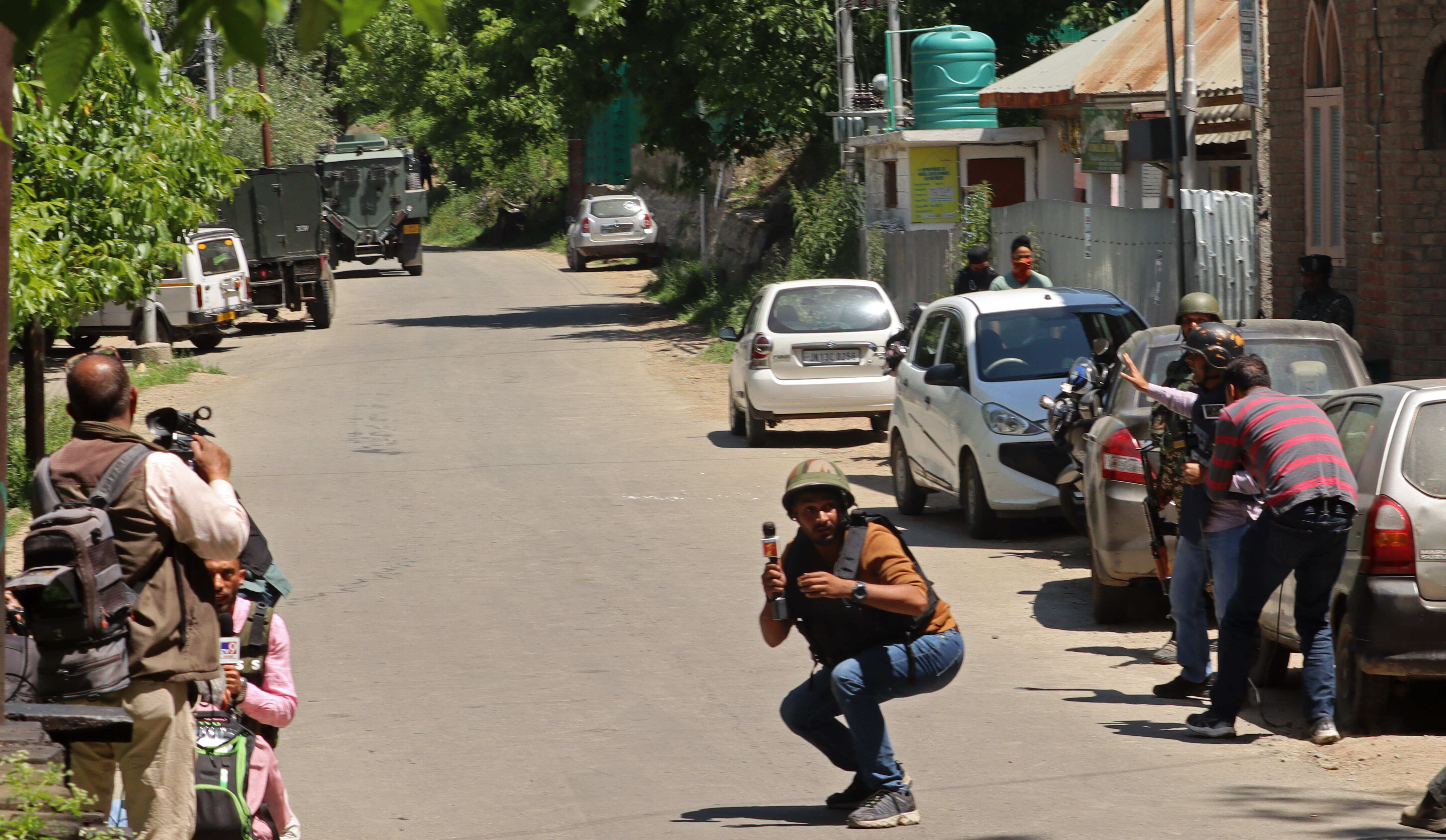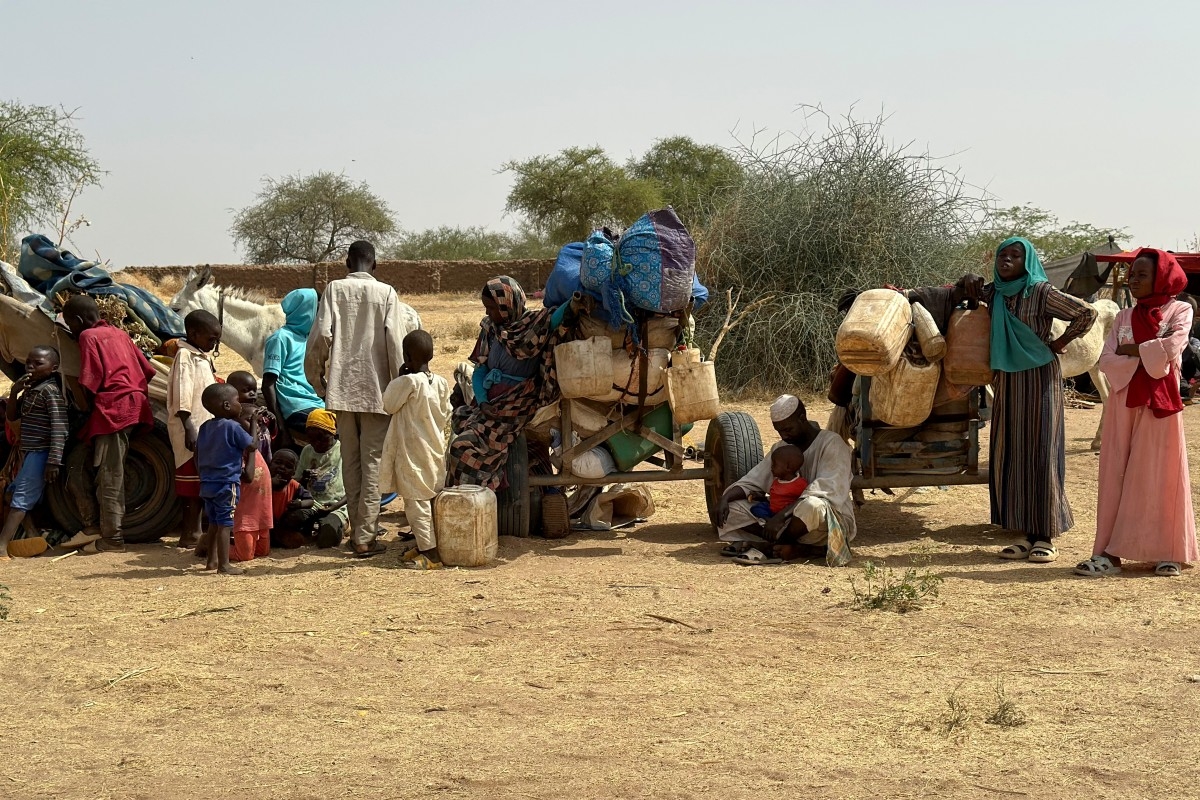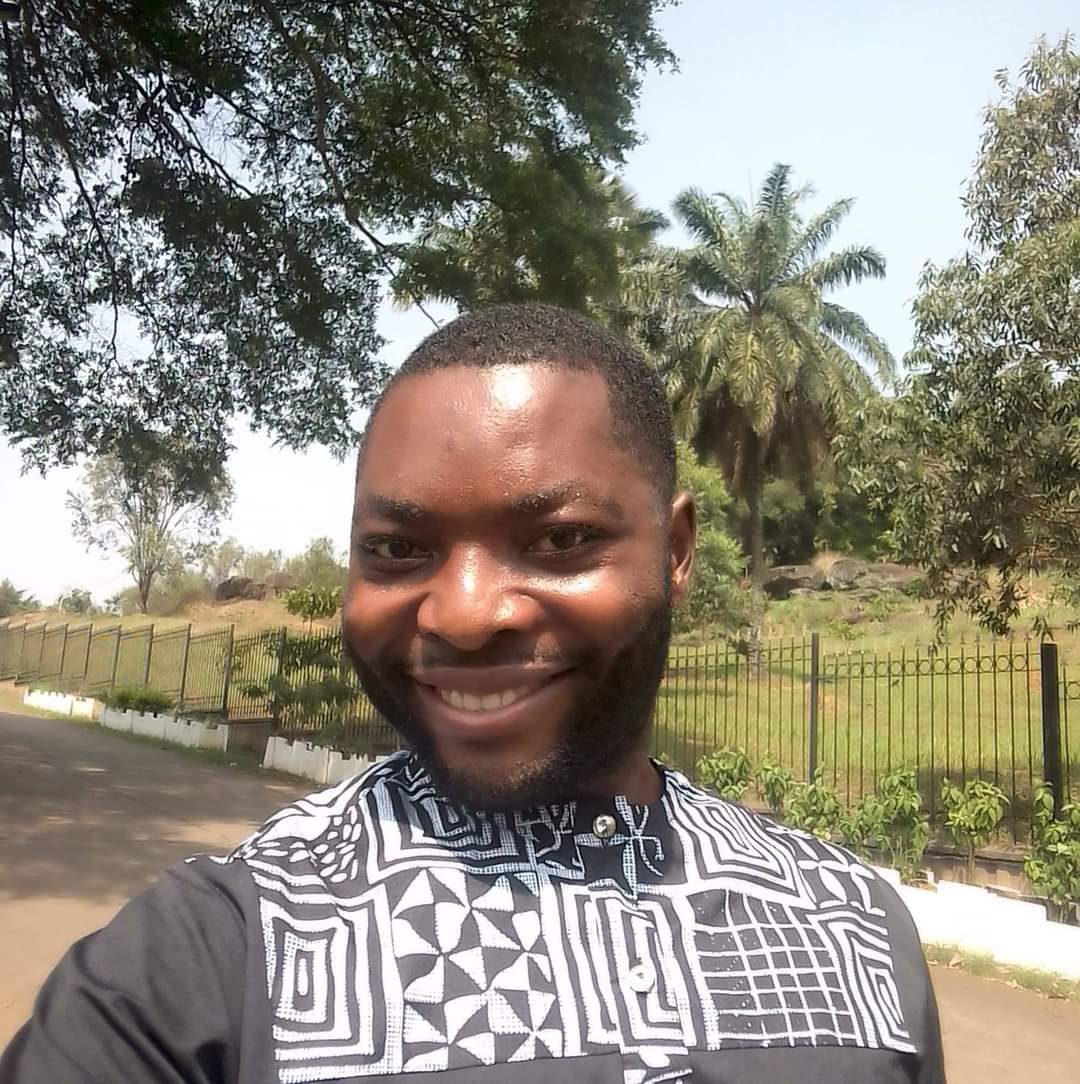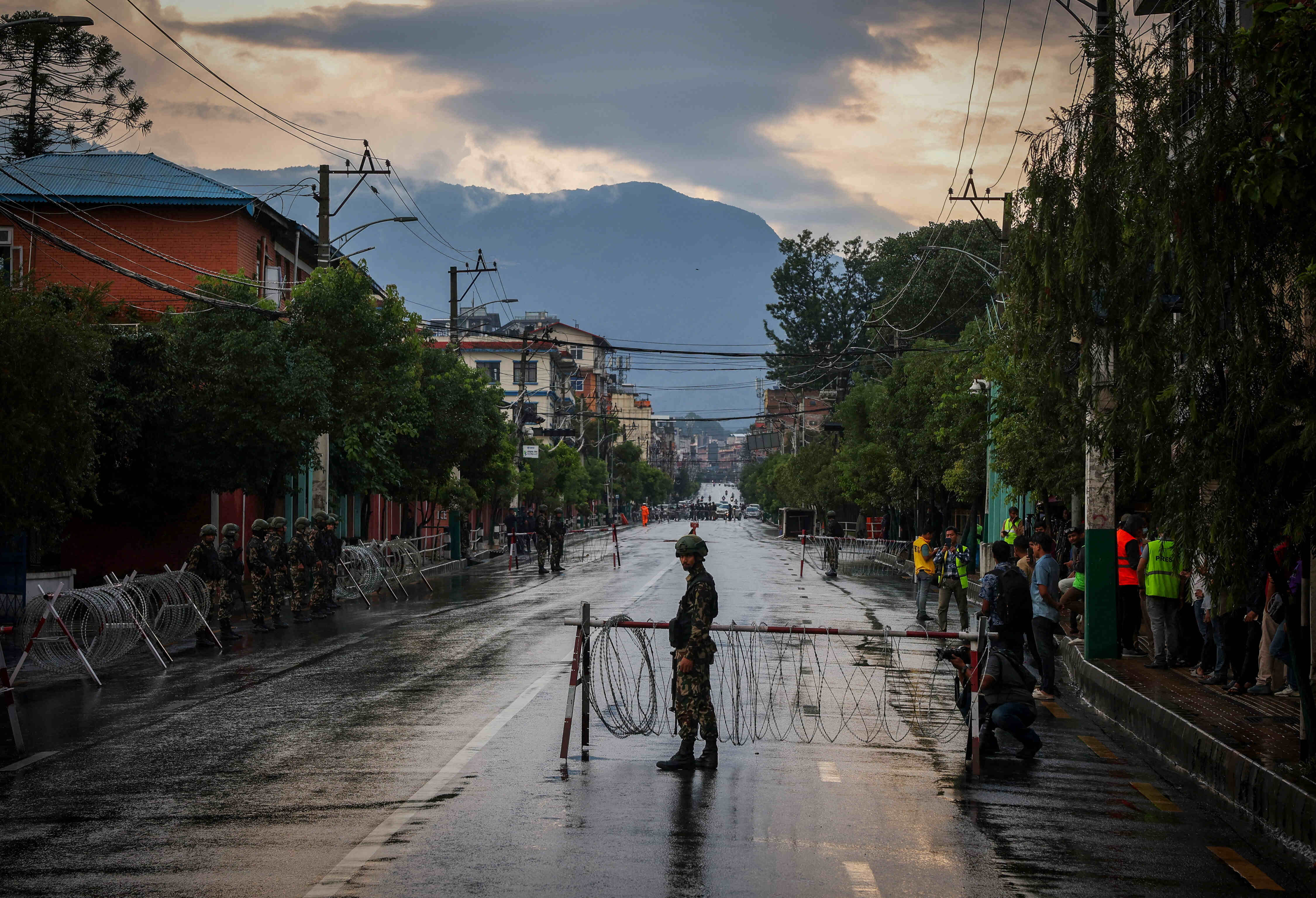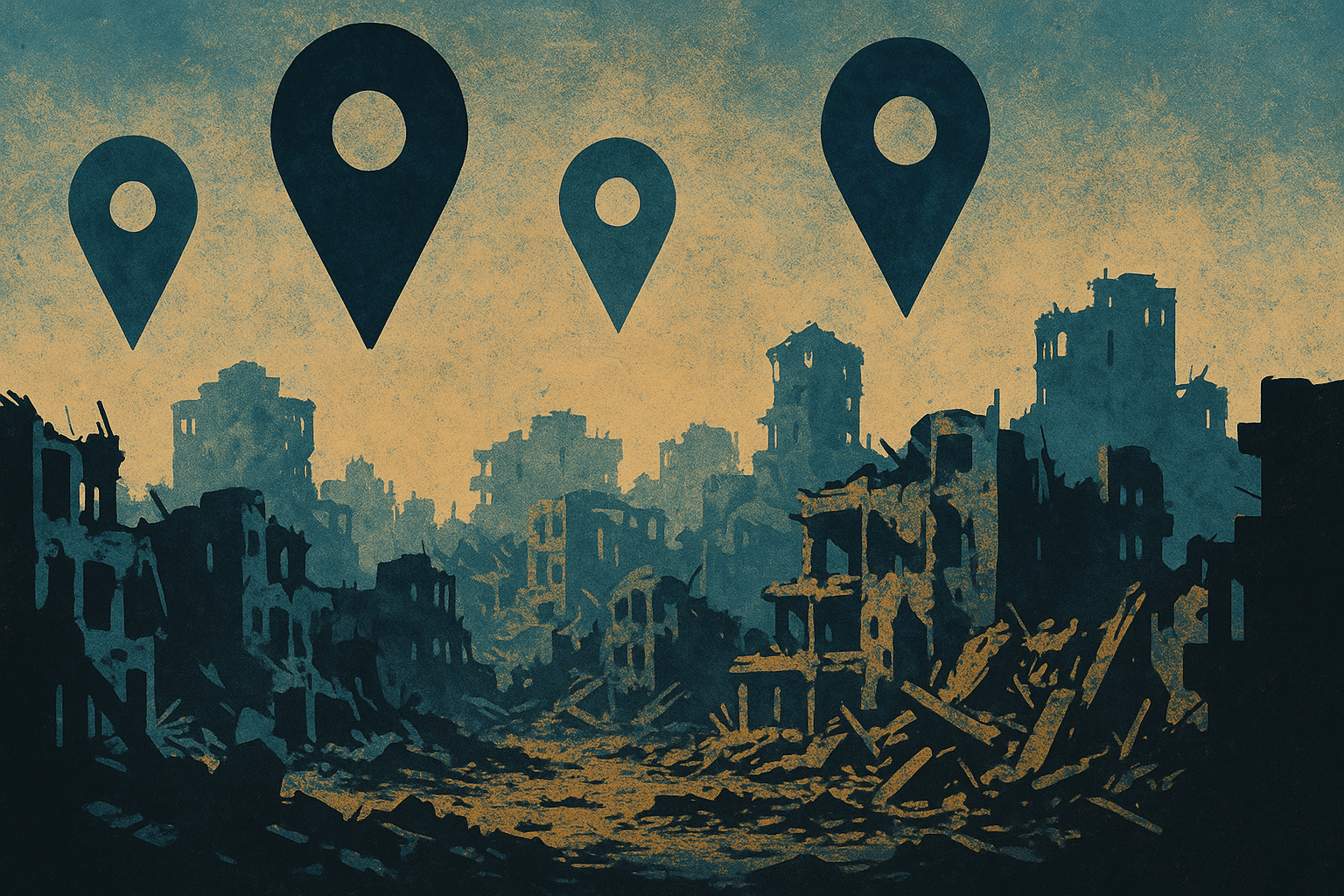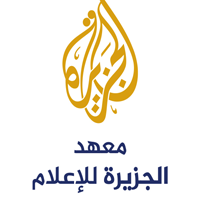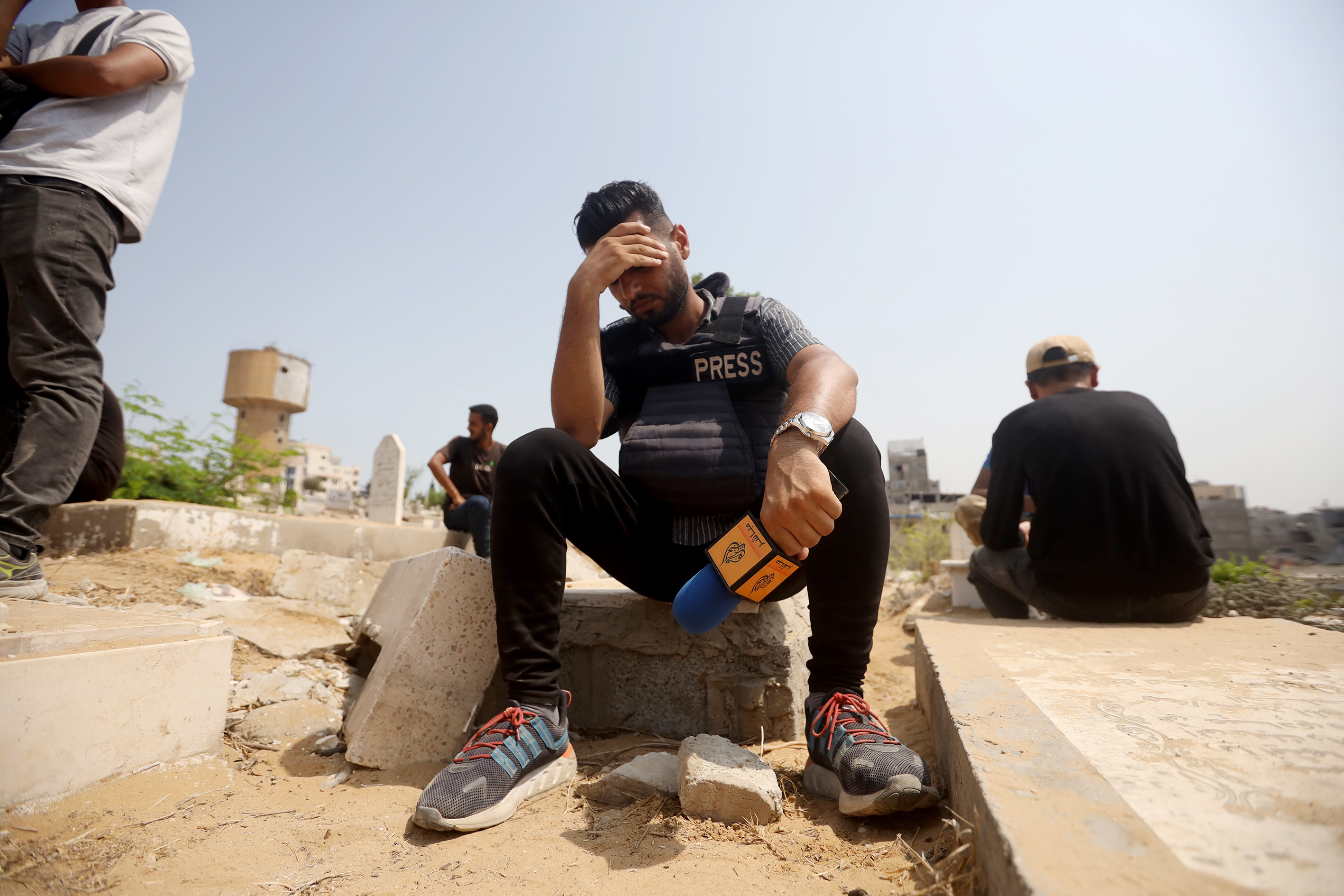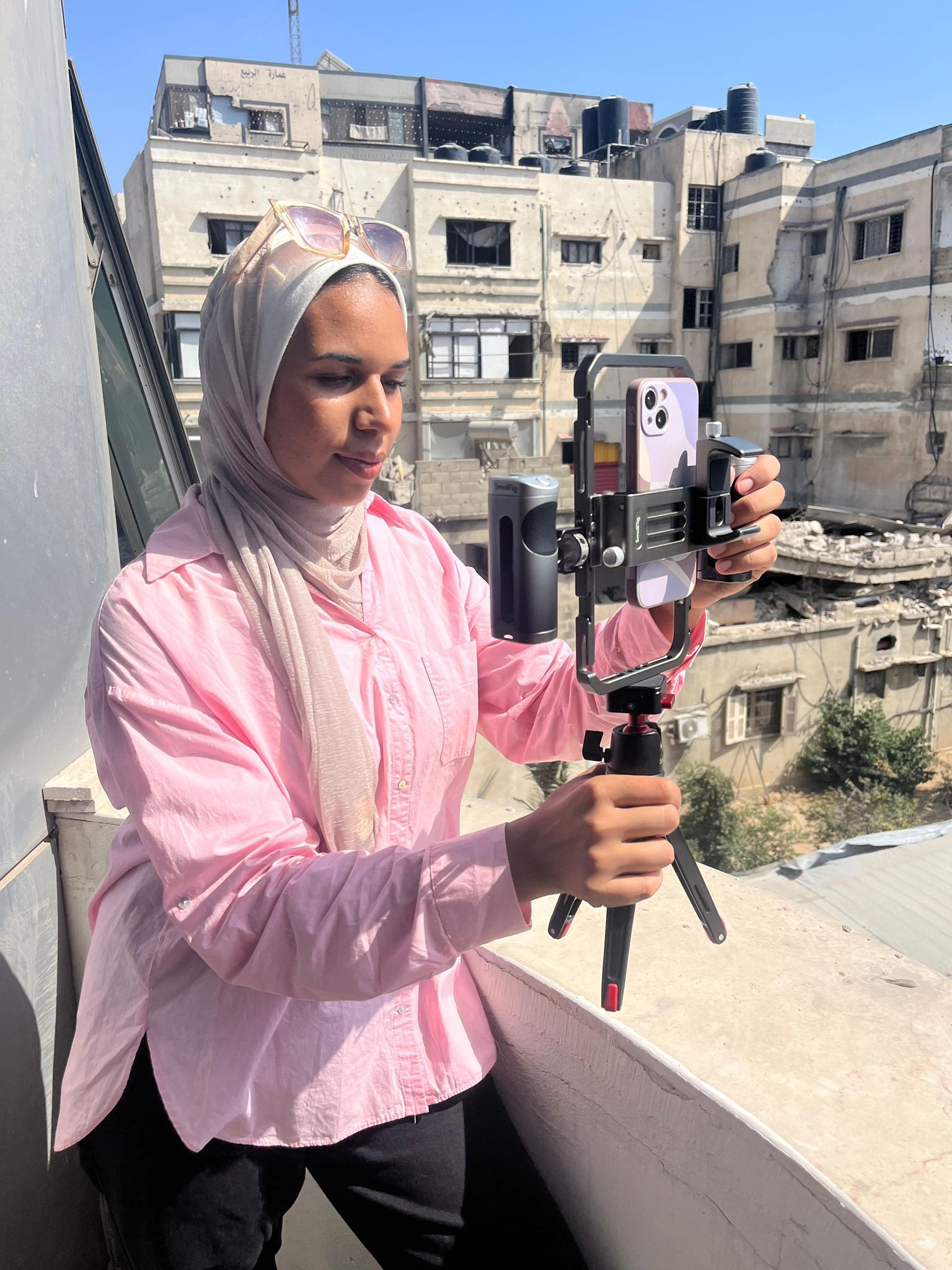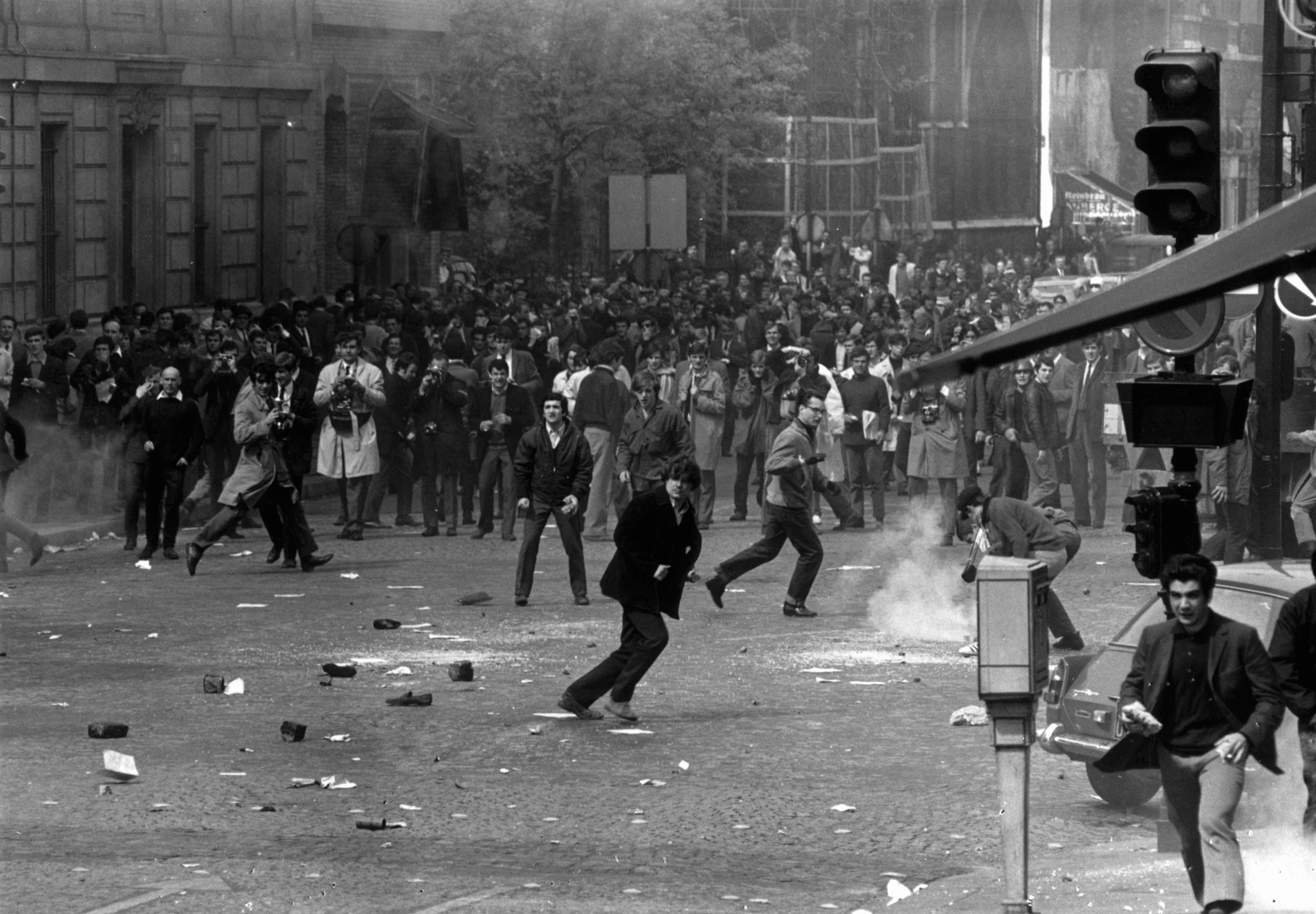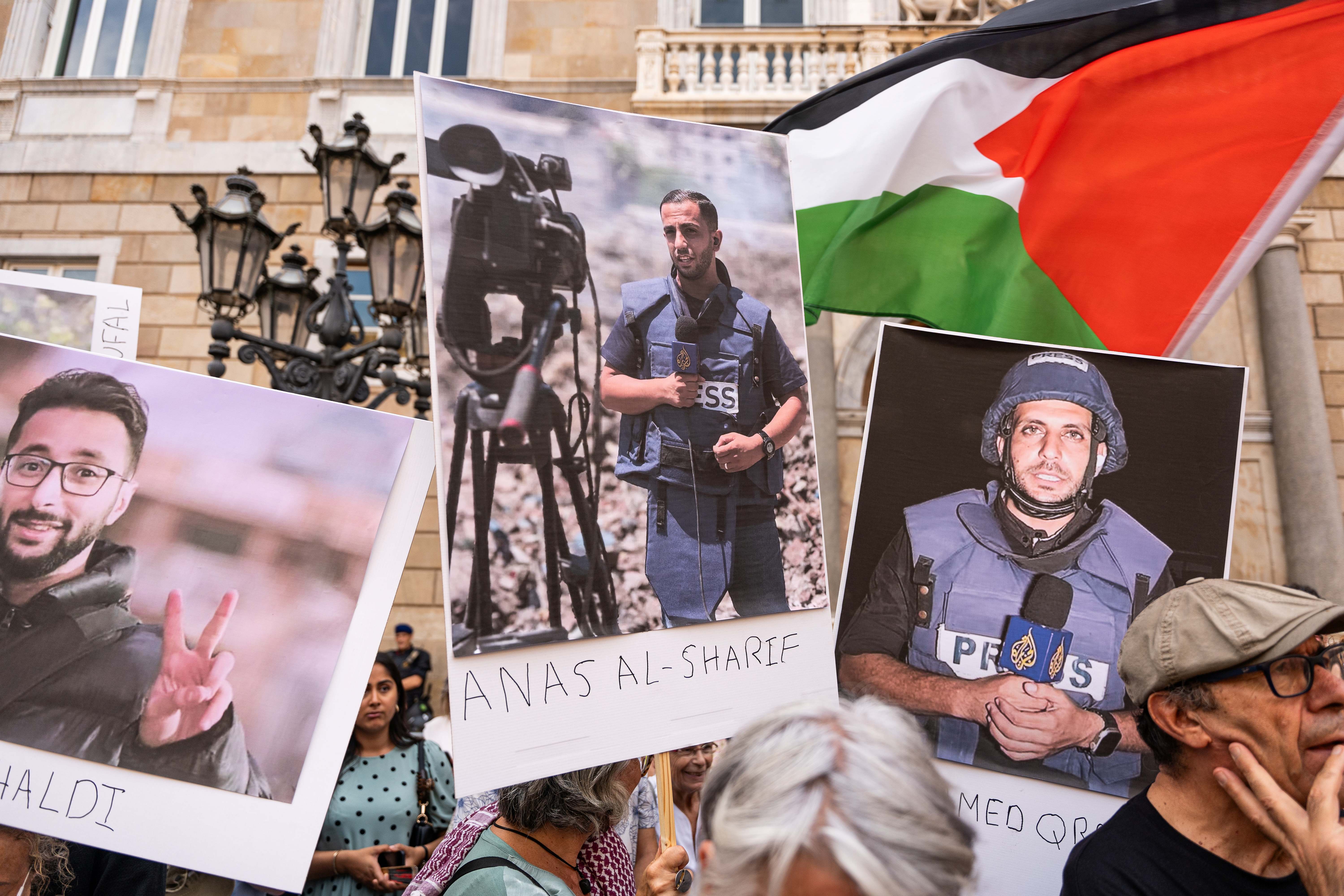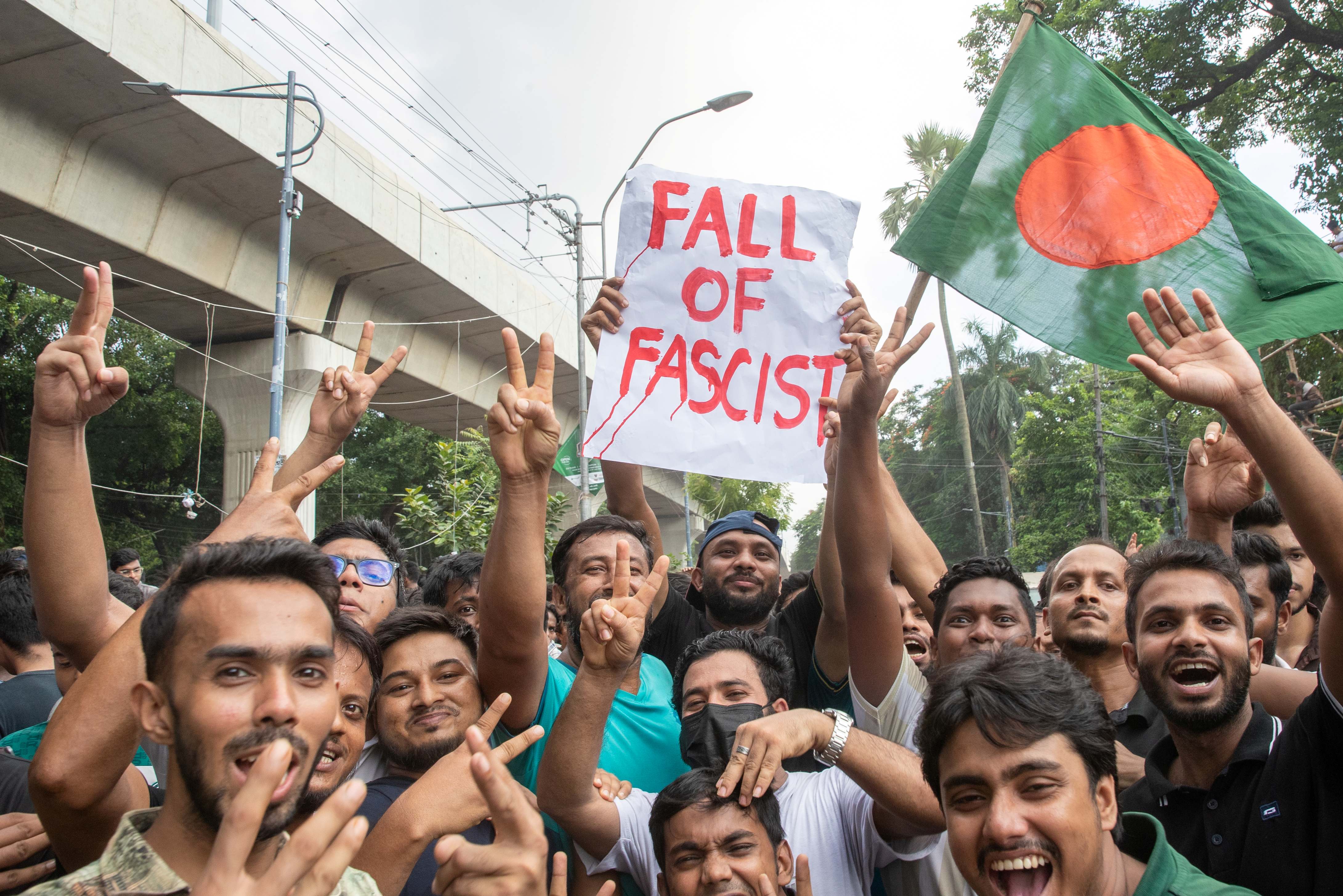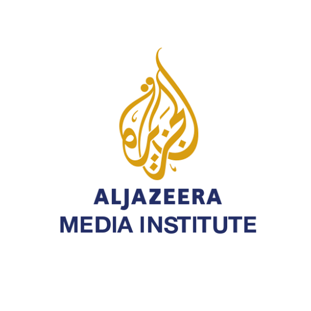لا يزال صوت أستاذتي، التي كانت تدرسنا في جامعة "السوربون" مقرَّر "وسائل الإعلام والمجتمع"، يرن في أذني؛ أتذكّرها، عندما كانت تُخفِض نبرتها لتستخلص، أمامنا، ما توصلت إليه من قناعة خلال مسيرتها الأكاديمية الطويلة: "الموضوعية في الصحافة هي أسطورة.. ولا تصدّقوا من يقول لكم عكس ذلك". و"ماذا عن الحرية في الصحافة؟" سألتُها مستطردةً على "مُسلَّمتها"، فأجابت بأسف: "C'est du pareil au même"، أي: الأمران سيّان. فوجئتُ، بالتأكيد، بما عبّرت عنه أستاذتي التي تنتمي إلى مجتمع، كنّا نحسب أنّ صحافته وصحفيّيه يعيشون في نعيم لا يتوفر لنا، نحن صحفيي البلدان المُسمّاة نامية. لكنني اليوم، فقط، فهمتُ ما كانت تعنيه أستاذتي الفرنسية، التي لا أعرف ما إذا كانت لا تزال على قيد الحياة، وتشهد على ما يرتكبه إعلام بلادها، والإعلام الغربي عموما، من فظاعات في تغطية حرب الإبادة التي يشنّها الاحتلال الإسرائيلي على الفلسطينيين في قطاع غزة (1).
لا يزال صوت أستاذتي، التي كانت تدرسنا في جامعة "السوربون" مقرَّر "وسائل الإعلام والمجتمع"، يرن في أذني؛ أتذكّرها، عندما كانت تُخفِض نبرتها لتستخلص، أمامنا، ما توصلت إليه خلال مسيرتها الأكاديمية الطويلة: "الموضوعية في الصحافة هي أسطورة.. ولا تصدّقوا من يقول لكم عكس ذلك".
لكن، ليس تعاطي الإعلام الغربي مع حرب غزة هو موضوع هذه السطور، بل الحرية الصحفية التي يُحتفى بها في هذه الأيام، بمناسبة اليوم العالمي لحرية الصحافة الذي اعتمدته الجمعية العامة للأمم المتحدة منذ أكثر من ثلاثة عقود؛ فهي تُحيي، عبره، ذكرى اعتماد إعلان ويندهوك التاريخي الذي جرى تبنيه في مؤتمر للصحفيين الأفارقة في 3 مايو/ أيار 1991، بهدف تطوير صحافة حرة ومستقلة وتعددية. ومنذ ذلك الوقت، تحوّل هذا الإعلان إلى "أداة" لقياس أحوال الصحافة وتقييمها في 180 دولة في العالم، وبات "3 مايو/ أيار" ذكرى يتجدد فيها، كل عام، التأكيد على المبادئ الأساسية لحرية الصحافة، وحماية وسائل الإعلام من شتّى أنواع الاعتداءات، وتعريف الجماهير بانتهاكات حق الحرية في التعبير، ووجوب ضمان بيئة إعلامية حرة وآمنة للصحفيين. كذلك أضحى مناسَبةً، تُوجَّه فيها التحية إلى الصحفيين الذين واجهوا (ويواجهون) الموت أو السجن في أثناء ممارسة مهنتهم(2). وإذا كان الفيلسوف الألماني كارل ماركس يرى أن الإنسان هو أثمن رأسمال في الوجود، فإن القوانين والشرعات الإعلامية الدولية تَعُدّ الحرية الصحفية أهمّ شرط لإعمال حقوق هذا الإنسان.
ماذا تعني حرية الصحافة؟
لقد لخصت المادة 19 من الإعلان العالمي لحقوق الإنسان تعريف هذا المفهوم بالقول إنّ "لكل شخص حق التمتع بحرية الرأي والتعبير، ويشمل هذا الحقّ حريته في اعتناق الآراء من دون مضايقة، وفي التماس الأنباء والأفكار وتلقيها ونقلها إلى الآخرين، بأي وسيلة ومن دون اعتبار للحدود". وعليه، ارتكز كل قانون وُضِع بشأن الإعلام وعمله على هذه المادة، التي لم تكن كافية، كما يبدو، لتأمين الحماية والرعاية للحق الطبيعي للكائن البشري في الاتصال والتعبير عن الرأي، ودرء المخاطر عنه وعن مهنة الصحافة والإعلام والقائمين عليها، بل إن الانهيارات في جدار حرية الإعلام مهولة على مستوى العالم (بدرجات متفاوتة طبعا)، وكلّ المواثيق التي سُنَّت، بعدئذ، في إطار تعزيز الحريات الإعلامية، تقف عاجزة عن حماية الصحفيين من الاعتقال والسجن أو فصلهم من المؤسسات التي يعملون فيها(3).
ومع بداية القرن الحالي، يقدّم لنا الواقع، ودوريّا، نماذج صارخة لانتهاك الحريات الإعلامية في العالم كله؛ إذ يشكل الصحفيون، وأينما وُجِدوا، "أهدافا كبيرة القيمة"، وتوثق الكاميرات مشاهد الاعتداءات التي يتعرض لها صحفيو الميدان في المناطق المشتعلة (أو مَن نسميهم "فدائيّي المهنة"). هم يُقنَصون أو يُحتجَزون أو يُختطَفون من أجل فدية، أو تُنفَّذ فيهم إعدامات علنيّة تبعث برسائل "مختلفة الغايات" إلى الجهات المعنية. فهذا ما حدث، على سبيل المثال، في لبنان والجزائر والعراق وليبيا واليمن وأفغانستان وأوكرانيا ويوغسلافيا وكل المناطق التي شهدت صراعات وحروبا، ولقد تكشفت صور مفزعة عن تدهور الحريات الإعلامية في ظل أجواء القتل والقمع والفوضى، وهي أجواء شبيهة وتُذكِّر بتلك التي كانت سائدة قبل ثلاثة قرون في أوروبا. لكن، كل ما يحصل في المعمورة، في كفة، وما يفعله الصهاينة في فلسطين، وعلى مرأى من العالم أجمع، في كفة أخرى.
لم يشهد التاريخ الحديث أيّ حرب خيضت بهذه الطريقة المميتة للصحفيين، كتلك التي تُخاض، حاليا، على الصحفيين الفلسطينيين وزملائهم ممّن يغطّون المعارك المستمرة في قطاع غزة وجنوب لبنان منذ أكثر من ستة أشهر(4). لقد كشفت الحرب الراهنة قدرة إسرائيل الفائقة، ليس على الإجرام فحسب، بل على جر الغالبية العظمى من حكومات العالم وسياسيّيه إلى دفن أخلاقهم وضميرهم وإنسانيتهم بأيديهم، تحت سابع أرض. وإذا كان مفهوما، ربّما، أن يختلف الناس ويتساجلوا بشأن عدالة القضية الفلسطينية أو حق الفسطينيين في مقاومة المحتل، فمن غير المقبول، على الإطلاق، أن تكون فظاعة ما يحصل أمام أنظارنا من سحق لمقومات وجود الإنسان الفلسطيني موضوعا للسجال والأخذ والرد! والأفظع منه، أن يمتنع "العالم الحر" (تعبير بات مدعاة للسخرية) عن إدانة هذا التدمير والدعوة، أمس قبل اليوم، إلى إيقافه الفوري.
ما تفعله إسرائيل في غزة، لا يتطابق مع أي إستراتيجية عسكرية قرأنا عنها، وتُخاض على أساسها الحروب، الدفاعية منها والهجومية، ولا تشبه حروبها، كذلك، أي نمط من أنماط الحروب التي عرفتها العلوم العسكرية والصراعات المسلحة في التاريخ. وهذه مسألة متوقعة؛ لأنّ ما ينفذه الصهاينة على الأرض الفلسطينية ليس صراعا عسكريا، إنّما هو إبادة جماعية، تقوم عليها عقيدة إسرائيل العسكرية، ولم يشهدها العالم، على الأرجح، منذ أيام المغول (في القرن الثالث عشر)، أي أولئك الذين تُعرّفهم كتب التاريخ بأنهم "أعظم رعب مَرّ على تاريخ البشرية".
دشّنت إسرائيل، في غزة، عهدا جديدا ومفهوما مغايرا لإبادة الشعوب، أبرز مقوّماته أنّه يجري، وعلى عكس كل الإبادات الجماعية المعروفة سابقا، بمباركة المواثيق الدولية وغطرسة المؤسسات الأممية وعجز نظام عالمي (مصطنع) عن إحقاق الحق وإحلال السلام. حطمت إسرائيل رقما قياسيا في عدد الضحايا الفلسطينيين الذين أعدمتهم جماعيا وبشكل منظم؛ فتفوقت جرائمها على جرائم الإبادة في أرمينيا وسربرنيتشا ورواندا وما فعله النازيّون الألمان باليهود في أثناء الحرب العالمية الثانية(5). و"الاجتهاد" الذي أضافته إسرائيل على سِجِل تلك المذابح، هو تعقبها للصحفيين الذين ينقلون، بالخبر والتقرير والصوت والصورة، فظاعاتها في زمن التعتيم والتضليل الإعلامي الغربي ونشر المعلومات الزائفة والكاذبة. كيف تخوض إسرائيل حربها على الصحفييين وحرية الصحافة؟
لم يشهد التاريخ الحديث أيّ حرب خيضت بهذه الطريقة المميتة للصحفيين، كتلك التي تُخاض، حاليا، على الصحفيين الفلسطينيين وزملائهم ممّن يغطّون المعارك المستمرة في قطاع غزة وجنوب لبنان منذ أكثر من ستة أشهر.
عدا عمليات القتل والقمع المباشرة بحق الصحفيين، عممت إسرائيل خطابا إعلاميا أسهم، في المضمون والشكل والأسلوب، في التمكين لخطاب متطرف تملؤُه شتى صنوف العنصرية الكريهة، ووضع هذا الخطاب إستراتيجية اعتمدت على خمس آليات، كامنة أو ظاهرة، وَجَّهَتْه وجهةً معينة. هذه الآليات هي(6):
الأولى، وضع النفس في موقع الضحية (وهذه ثابتة في الخطاب اليهودي منذ الأزل)؛ إذ يصور الإعلام الإسرائيلي، والغربي أيضا، الإنسان الإسرائيلي بصورة "الضحية" التي تتعرض للقتل والقصف والتعذيب والاضطهاد، وتحتاج –من ثَمّ- إلى المساعدة في رفع الظلم عنها.
الثانية، التعبئة وإثارة النفوس، بحيث يسعى الإعلام إلى تحريك عواطف الجمهور المتلقي وتأجيج مشاعره وإيقاظ الانفعالات لديه وتحفيز النفوس واستثارتها جماعيا لنصرة إسرائيل. وتتمّ "فبركة" الرأي العام، تارة، عن طريق إثارة الفزع والذعر في حال تخلي العالم عن اليهود وساكني إسرائيل، أو من خلال الكذب ونشر صور لأحداث لم تحصل في الحقيقة (مثل صور الأطفال المحروقين التي ادُّعِي بأنّها تعود لأطفال إسرائيليين ليتبين بعد ذلك زيفها)، وتارة أخرى عبر طمأنة "جمهورهم" بأن الانتصار المُحتَّم سيكون لـ"دولة إسرائيل".
الثالثة، التأسيس للخوف والكراهية، بحيث ينحو الإعلام الإسرائيلي والغربي، دوما، إلى بث نزعة الكراهية والتشدد والتحريض، في بعض المواقف والموضوعات، لممارسة العنف بحق الفلسطينيين.
أمّا الآليّة الرابعة، فهي النزعة الفوقية والشوفينية التي تقوم على مفهوم "تفوق إسرائيل (والغرب)" على الفلسطينيين والعرب والمسلمين، بوصفها حجّة ومنطلَقا لرفض فكر "العدوّ" وفلسفته، وكذلك بوصفها أداة سياسية واجتماعية لرفض أنماط العيش والاجتماع والنظم السائدة لدى هذا العدو؛ فإسرائيل هي التي ينتسب أعضاؤها إلى الطليعة، وعلى هؤلاء أن يحدّدوا، مِن ثَمّ، علاقاتهم بالآخرين المحيطين بهم وفق أُسس دينهم ومبادئه وخصائصه وآفاق تعاليمه.
وتعتمد الآلية الخامسة على اللغة النزاعية، وهي أهم آلية يعتمدها الخطاب الإسرائيلي إزاء حركة حماس والفلسطينيين؛ بحيث يسعى هذا الخطاب إلى إقناع الجمهور وتحفيزه (بشكل مباشر وعلني غالبا) لنبذ أفكار "الخصم" ومعتقداته وقيمه وسلوكاته واستنكارها، بحكم أن كل ما لدى "هذا الخصم" غير مقبول ومكروه، ومرفوض حتى. وفي هذا السياق، تعمد اللغة النزاعية لخطاب الإسرائيليين ومؤيديهم إلى تقويض مصداقية حركة حماس وتجريدها من الشرعية عبر تصنيفها وتوصيفها بألفاظ سلبية وتجريدها من الإنسانية عبر إظهار العمليات، التي تمارسها، منافية لحقوق الإنسان وكرامته، وإلصاق صفات شخصية وألقاب وتسميات تحمل خلفيات أيديولوجية ودينية وأخلاقية(7).
تعتمد الآلية الخامسة على اللغة النزاعية، وهي أهم آلية يعتمدها الخطاب الإسرائيلي إزاء حركة حماس والفلسطينيين؛ بحيث يسعى هذا الخطاب إلى إقناع الجمهور وتحفيزه لنبذ أفكار "الخصم" ومعتقداته وقيمه وسلوكاته واستنكارها.
بعد اجتياحها العراق في سنة 2003، قررت الولايات المتحدة الأمريكية إنفاق ملايين الدولارات من أجل "تشجيع الديمقراطية في العالم العربي"، من خلال دورات تدريب للصحفيين؛ فواشنطن تُدرك، بعد التجربة المُرّة في فيتنام، أنّ الإعلام أكثر خطورة من أن يُترَك للإعلاميين. واليوم وبعد عقدين من الزمن، ها هي الولايات المتحدة، ذاتها، تُنفِق ملايين الدولارات من أجل تشجيع القمع في فلسطين، من خلال إطلاق العنان للآلة الحربية الإسرائيلية لكي تقتل الصحفيين، بخاصّة. رهيبة هذه المفارقة!
واليوم، إذا كانت الأنظمة السياسية الغربية، ولا سيما تلك المتعاطفة مع كيان الاحتلال في فلسطين، مبتهجة بالعناوين البراقة التي تسوقها عن نهجها الديمقراطي الحر؛ كعنوان "اليوم العالمي لحرية الصحافة"، فلأنّها تعبِّر، عموما، عن نفاق واضح وتساوق لا مثيل له مع الجلاد منذ البداية. فهل ستتنكر له، عندما تُدرك أنّه ساقط لا محالة؟ اقتضى التساؤل والترقّب.
المراجع
(1) سعاد قطناني، BBC انكسار الصورة، بيروت، المؤسسة العربية للدراسات والنشر، 2018.
(2) Stéphane Hoebeke & Bernard Mouffe, Le droit de la presse, 3e édition, Belgique, Anthemis s.a, 2012.
(3) صباح ياسين، الإعلام حرية في انهيار، بيروت، الشبكة العربية للأبحاث والنشر، 2010.
(4) عبد الناصر العبري، الإعلام والحرب في بيئة أمنية متغيرة - توازنات إستراتيجية وفاعلون جدد، بيروت، رياض الريّس للكتب والنشر، 2021.
(5) رشيد الخالدي، حرب المئة عام على فلسطين، بيروت، الدار العربية للعلوم ناشرون، 2021.
(6) Patrick Charaudeau, Les médias et l’information - l’impossible transparence du discours, Bruxelles, De boeck, 2005.
(7) Daniel Cornu, Journalisme et vérité, Genève, LABOR ET FIDES, 2009.


